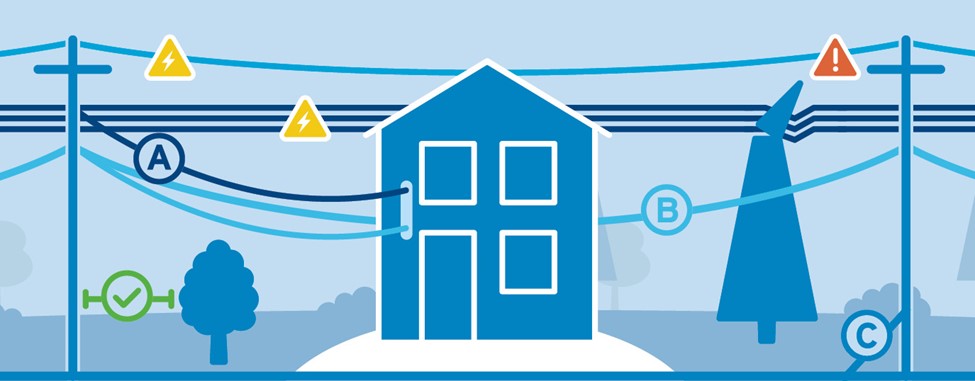You Asked, We Answer: Preventing outages through tree trimming
You Asked, We Answer: Preventing outages through tree trimming
Trees make our province a beautiful place to live—but when they get too close to power lines, they can also cause outages. It’s why we count on our vegetation management team to trim trees and remove branches around our lines.
You often ask us about how and where we trim trees—so in this week’s edition of You Asked, We Answer, we’re responding to your top tree trimming questions.
Q: How do you decide where to trim trees?
A: We make decisions based on outage statistics and other data, but storms also influence where we trim. Storms can weaken trees, but not cause them to fall right away. An important part of our tree trimming program is targeting areas that have experienced recent storm damage. After a large storm, we visit the hardest hit areas to patrol the power lines by helicopter. This enables us to identify damaged equipment, or anything that could cause issues down the road—including trees on lines. We go back to address those issues as quickly as we can before the next storm.
Q: Wouldn’t putting all power lines underground reduce the number outages caused by tree contacts?
A: We do have underground power lines in parts of the province—over 400 km. We work closely with municipalities and developers to determine if it makes sense to install underground systems, considering the impact on neighbourhoods and communities. As a regulated utility, we must find the most cost-efficient solutions for our customers and there is a large cost difference between running power lines overhead and running them underground.
We have over 500,000 power poles and over 32,000 kms of overhead power lines in Nova Scotia—that’s the same distance as three round trips from Halifax to Vancouver. That’s a lot of power lines that would need to be buried and require digging across most of Nova Scotia’s rocky terrain and throughout every neighbourhood in the province. Installing power lines underground instead of overhead can cost up to 10 times more.
Q: As a homeowner, what is my responsibility for tree trimming around power lines?
A: The graphic below provides an overview of the power lines that surround and connect to your home. It’s important to know what they are and if trees coming into contact with the wires could have an impact on power delivery.

 | A lower-voltage service wire brings electricity from the street power pole through to a mast on your house, which belongs to you. Trees around service wires could damage your mast and cause a power interruption to your home. Tree trimming in this case, is your responsibility. |
 | Communication wires (with black insulation around them) are the lower wires that run along the street and into your house, transmitting phone, cable and Internet signals. These are not electrical wires. Trees around these wires do not threaten the electrical system. |
 | Support cables provide physical support to utility poles. These are not electrical wires. Trees or bushes around these wires do not threaten the electrical system. |
Q: Do you ever trim trees that are on private property?
A: We often require permission from customers to complete tree trimming work on private property.
We appreciate being able to work with individual landowners to address areas that need vegetation work, because in many cases, the trees don’t belong to us, but they’re falling or coming into contact with the power lines. Sometimes the tree that is causing, or could cause problems, is on a residential property—or perhaps its private landowners or municipal land. Either way, getting permission to do this work is critical.
We also work with property owners if they want to replace trees or shrubs by helping them with what species of trees work well near power lines.
Q: If trees are the number one cause of power outages, why aren’t you investing more in trimming?
A: We’ve been investing between $20 - $25 million each year on vegetation management. This year (2023), we’re investing about $7M more and we’ll continue to increase our tree trimming efforts year over year, nearly doubling it over the next five years. So for example, in 2023, we will be investing roughly $32M and that will go up to almost $45M next year.
You can learn more about how we’re working to strengthen our electrical system and prevent power outages at nspower.ca/reliability.
For more information about our vegetation management program, visit nspower.ca/trees
Share This Post:


